warning JEEP WRANGLER 2007 Owners Manual
[x] Cancel search | Manufacturer: JEEP, Model Year: 2007, Model line: WRANGLER, Model: JEEP WRANGLER 2007Pages: 1401, PDF Size: 8.34 MB
Page 117 of 1401
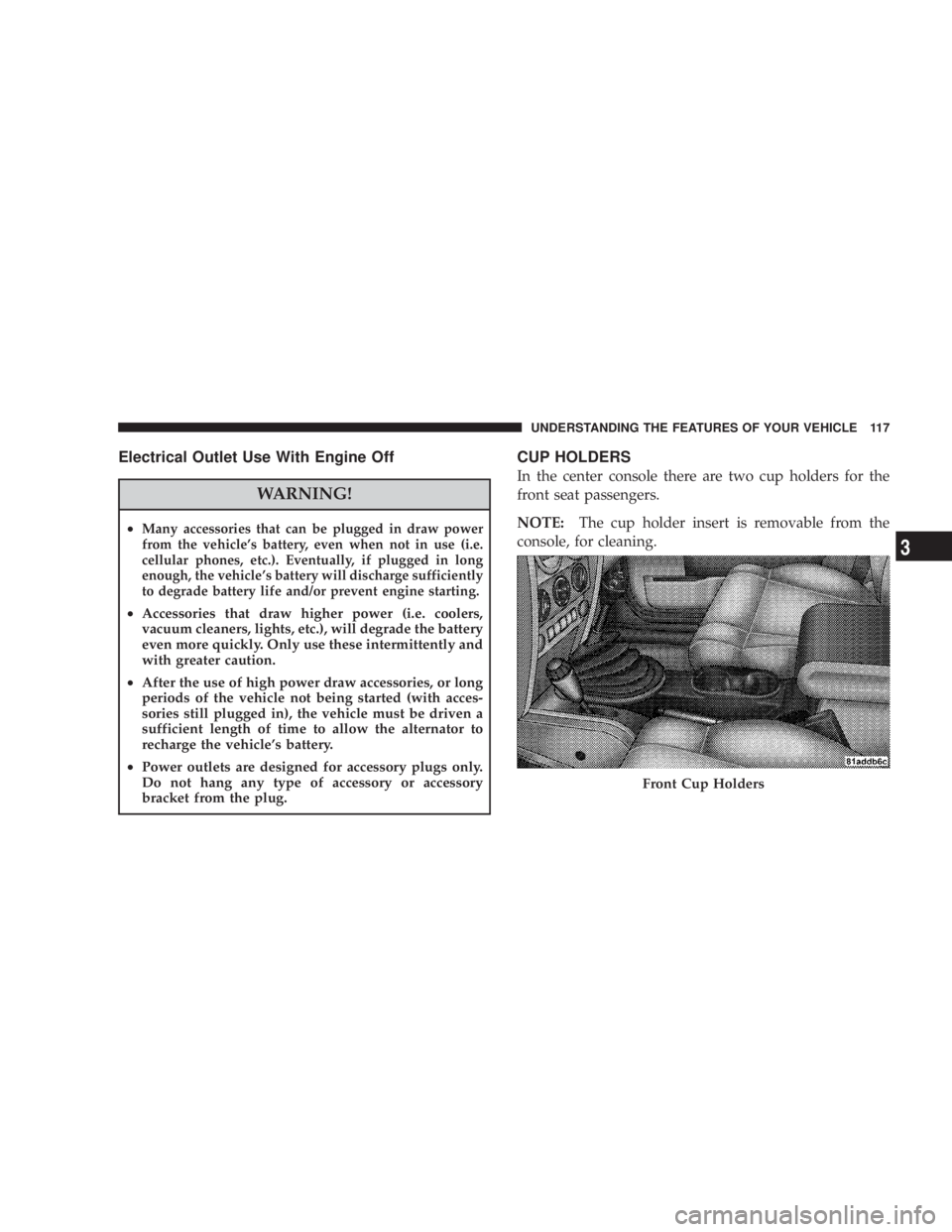
WARNING!
Never pour fuel or other flammable liquids into the
throttle body air inlet opening in an attempt to start
the vehicle. This could result in a flash fire causing
serious personal injury.
WARNING!
Do not attempt to push or tow your vehicle to get it
started. Vehicles equipped with an automatic trans-
mission cannot be started this way. Unburned fuel
could enter the catalytic converter and once the
engine has started, ignite and damage the converter
and vehicle. If the vehicle has a discharged battery,
booster cables may be used to obtain a start from a
booster battery or the battery in another vehicle. This
type of start can be dangerous if done improperly.
Refer to Section 6 of this manual for proper jump
starting procedures and follow them carefully.
STARTING AND OPERATING 267
Page 123 of 1401

WARNING!
It is dangerous to shift the selector lever out of P
(Park) or N (Neutral) if the engine speed is higher
than idle speed. If your foot is not firmly on the
brake pedal, the vehicle could accelerate quickly
forward or in reverse. You could lose control of the
vehicle and hit someone or something. Only shift
into gear when the engine is idling normally and
when your foot is firmly on the brake pedal.
STARTING AND OPERATING 273
Page 126 of 1401

WARNING!
It is dangerous to shift the selector lever out of P
(Park) or N (Neutral) if the engine speed is higher
than idle speed. If your foot is not firmly on the
brake pedal, the vehicle could accelerate quickly
forward or in reverse. You could lose control of the
vehicle and hit someone or something. Only shift
into gear when the engine is idling normally and
when your right foot is firmly on the brake pedal.
276 STARTING AND OPERATING
Page 180 of 1401

CAUTION!
After inspecting or adjusting the tire pressure always
reinstall the valve stem cap. This will prevent mois-
ture and dirt from entering the valve stem, which
could damage the wheel rim sensor.
NOTE:
•The TPMS is not intended to replace normal tire care
and maintenance, nor to provide warning of a tire
failure or condition.
•The TPMS should not be used as a tire pressure gauge
while adjusting your tire pressure.
•Driving on a significantly under-inflated tire causes
the tire to overheat and can lead to tire failure.
320 STARTING AND OPERATING
Page 195 of 1401
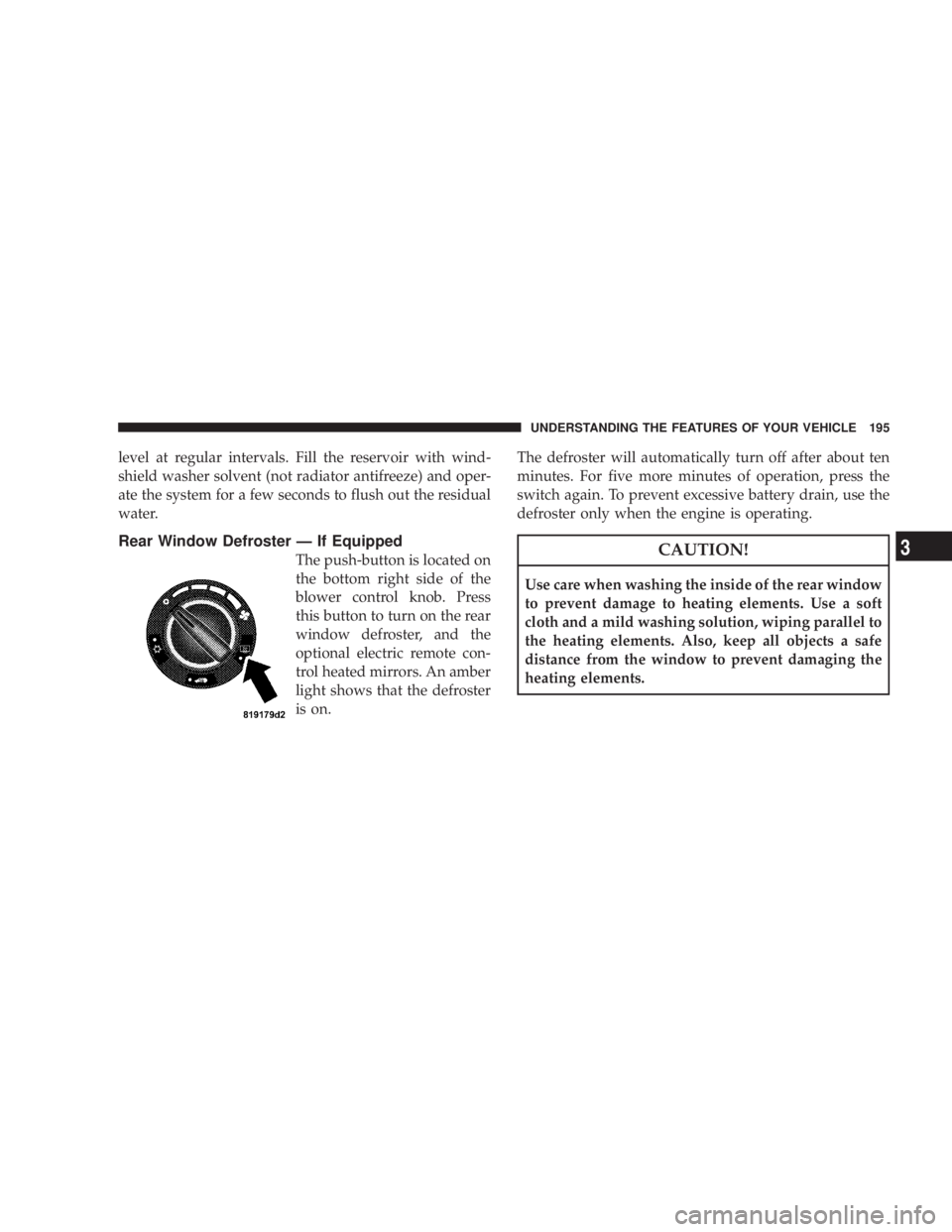
WARNING!
Driving with the flip-up window open can allow
poisonous exhaust gases into your vehicle. You and
your passengers could be injured by these fumes.
Keep the flip-up window closed when you are oper-
ating the vehicle.
Gate Handle
THINGS TO KNOW BEFORE STARTING YOUR VEHICLE 35
Page 255 of 1401
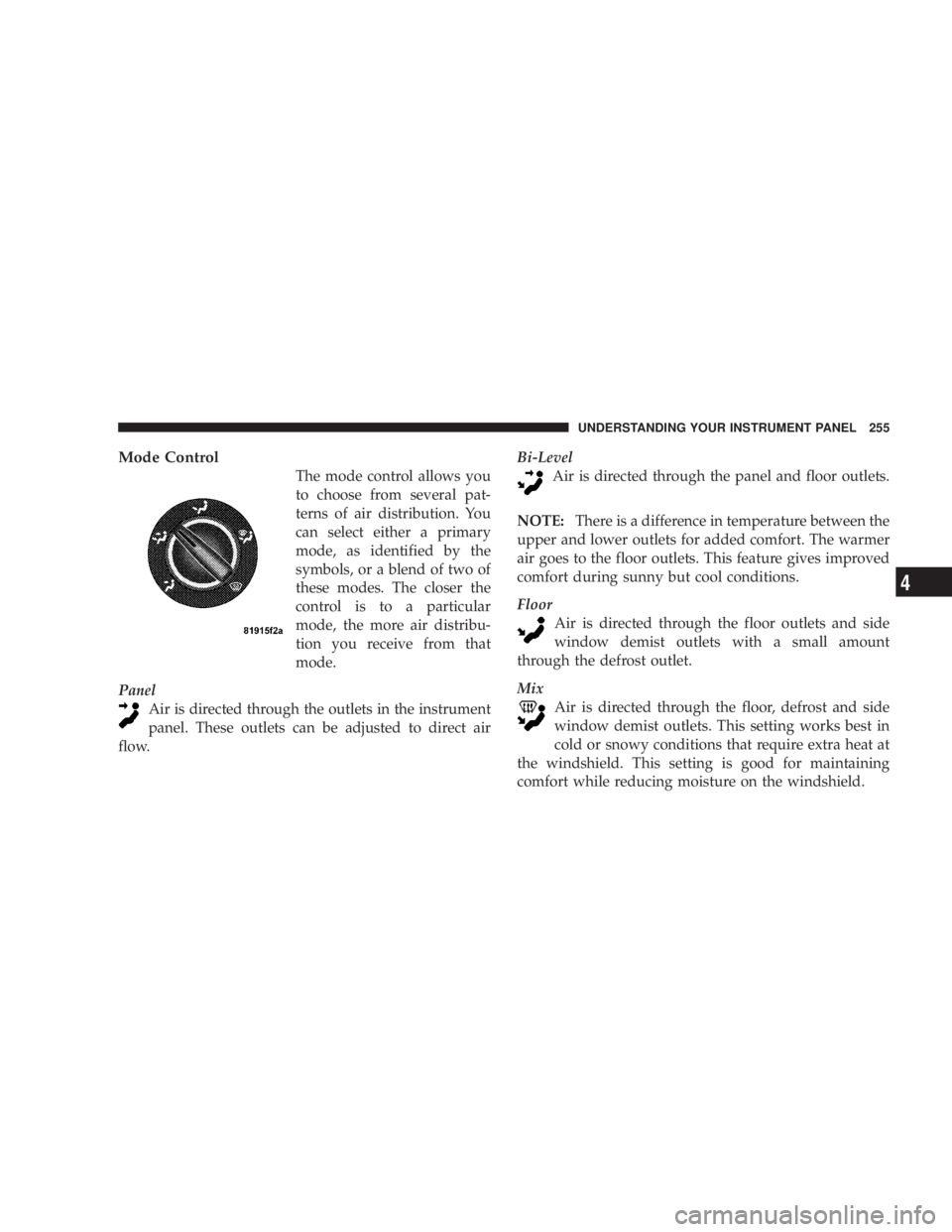
WARNING!
Driving with the flip-up window open can allow
poisonous exhaust gases into your vehicle. You and
your passengers could be injured by these fumes.
Keep the flip-up window closed when you are oper-
ating the vehicle.
Gate Handle
THINGS TO KNOW BEFORE STARTING YOUR VEHICLE 35
Page 281 of 1401
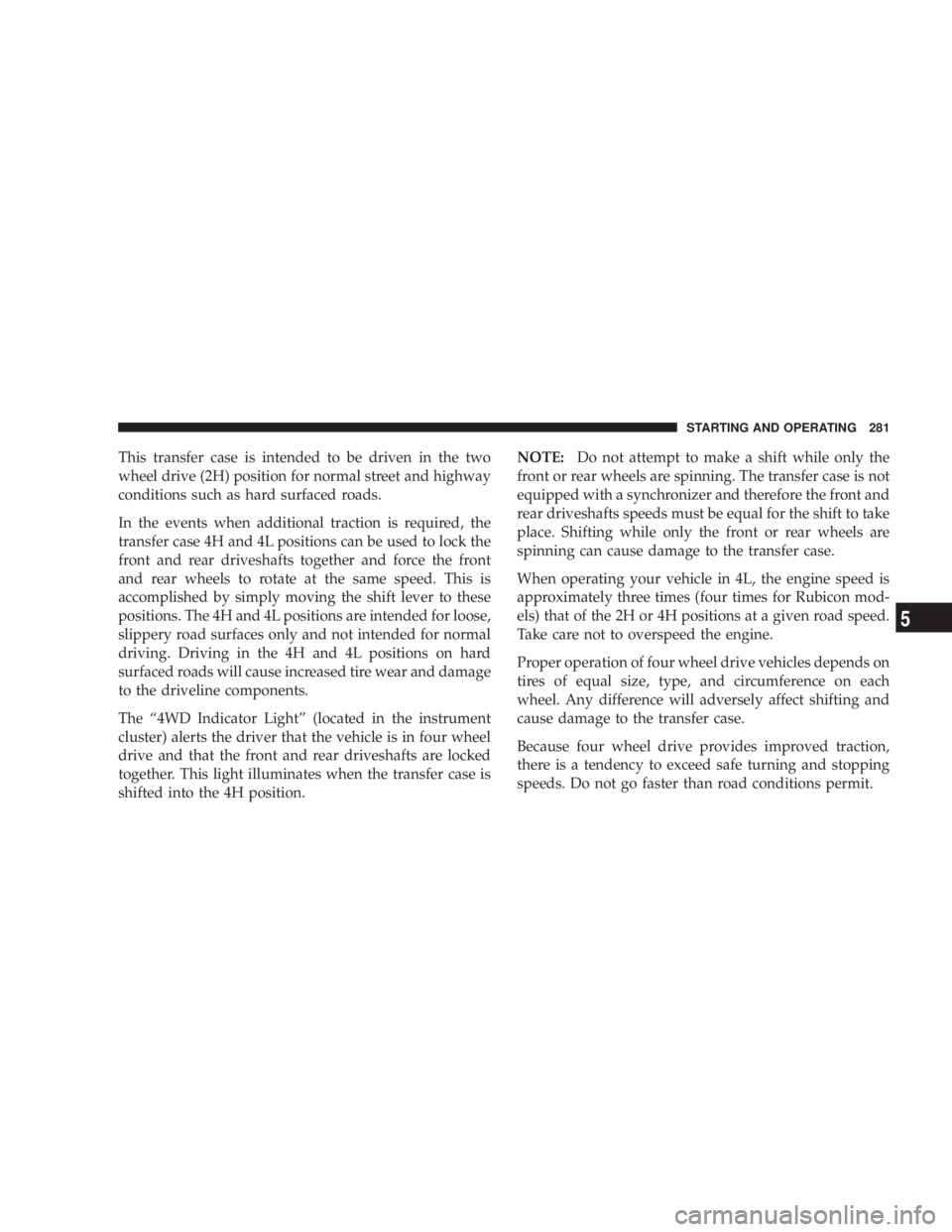
WARNING!
•Modifications to any part of the airbag system could cause it to fail when you
need it. You could be injured if the airbag system is not there to protect you. Do
not modify the components or wiring, including adding any kind of badges or
stickers to the steering wheel hub trim cover or the upper right side of the
instrument panel. Do not modify the front bumper or vehicle body structure.
•Do not attempt to modify any part of your advanced airbag system. The airbag
may inflate accidentally or may not function properly if modifications are made.
Take your vehicle to an authorized dealer for any advanced airbag system
service. If your seat including your trim cover and cushion needs to be serviced
in any way (including removal or loosening/tightening of seat attachment bolts),
take the vehicle to your authorized dealer. Only manufacturer approved seat
accessories may be used. If it is necessary to modify an advanced airbag system
for persons with disabilities, contact your authorized dealer.
•Do not place or hang any items such as add-on video players on the right front
passenger seat back. The additional weight may cause the Occupant Classifi-
cation System to be unable to correctly classify the right front occupant. This
could allow the passenger frontal airbag to inflate when it is not desired.
•You need proper knee impact protection in a collision. Do not mount or locate
any aftermarket equipment on or behind the knee bolsters.
•It is dangerous to try to repair any part of the airbag system yourself. Be sure
to tell anyone who works on your vehicle that it has an airbag system.
THINGS TO KNOW BEFORE STARTING YOUR VEHICLE 61
Page 332 of 1401
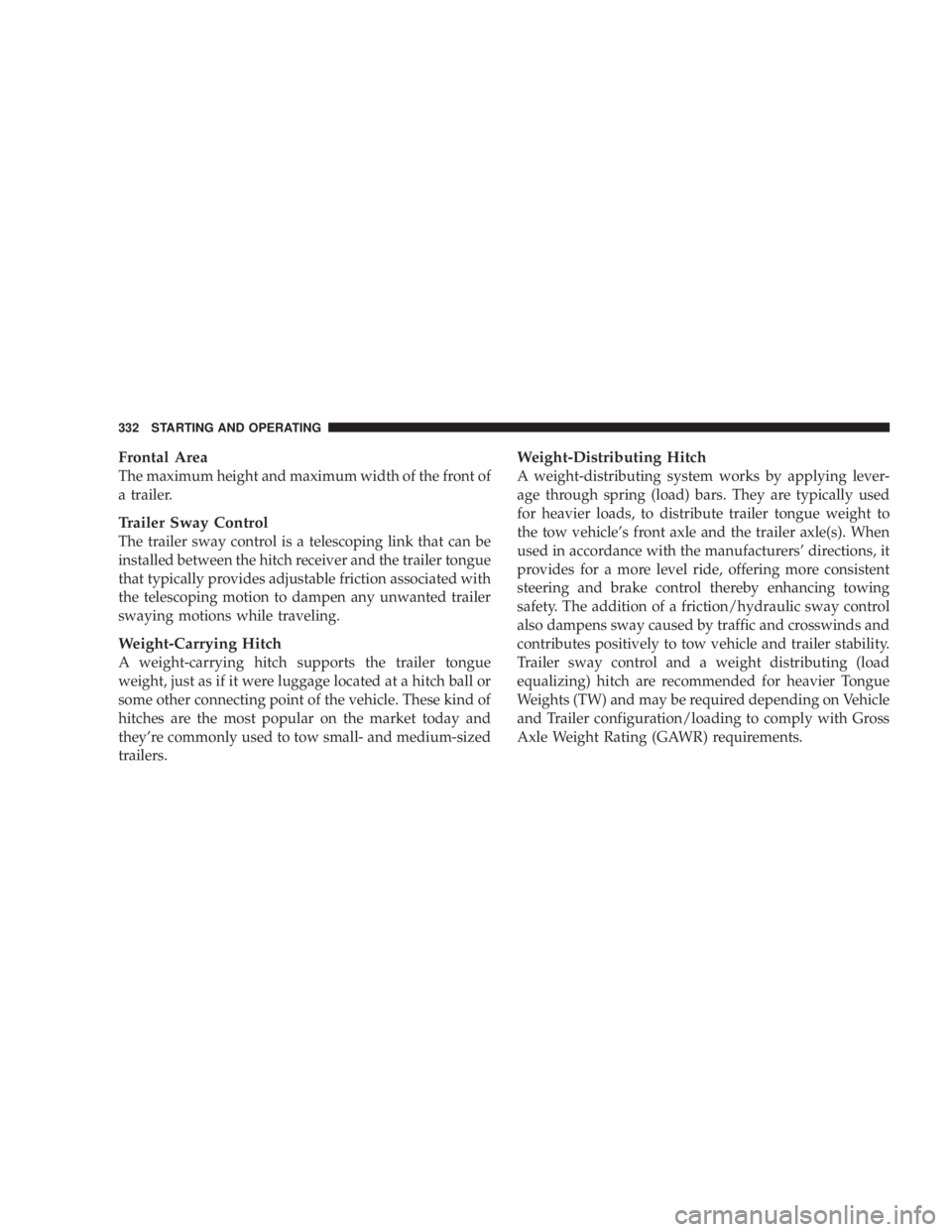
WARNING!
•Do not drive vehicle with rear window curtain up
unless side curtains are also removed. Dangerous
exhaust gases could enter the vehicle causing harm
to the driver and passengers.
•The fabric upper doors and fabric top are designed
only for protection against the elements. Do not
rely on them to contain occupants within the
vehicle or to protect against injury during an
accident. Remember, always wear seat belts.
142 UNDERSTANDING THE FEATURES OF YOUR VEHICLE
Page 347 of 1401

WARNING!
Never pour fuel or other flammable liquids into the
throttle body air inlet opening in an attempt to start
the vehicle. This could result in a flash fire causing
serious personal injury.
WARNING!
Do not attempt to push or tow your vehicle to get it
started. Vehicles equipped with an automatic trans-
mission cannot be started this way. Unburned fuel
could enter the catalytic converter and once the
engine has started, ignite and damage the converter
and vehicle. If the vehicle has a discharged battery,
booster cables may be used to obtain a start from a
booster battery or the battery in another vehicle. This
type of start can be dangerous if done improperly.
Refer to Section 6 of this manual for proper jump
starting procedures and follow them carefully.
STARTING AND OPERATING 267
Page 380 of 1401

CAUTION!
After inspecting or adjusting the tire pressure always
reinstall the valve stem cap. This will prevent mois-
ture and dirt from entering the valve stem, which
could damage the wheel rim sensor.
NOTE:
•The TPMS is not intended to replace normal tire care
and maintenance, nor to provide warning of a tire
failure or condition.
•The TPMS should not be used as a tire pressure gauge
while adjusting your tire pressure.
•Driving on a significantly under-inflated tire causes
the tire to overheat and can lead to tire failure.
320 STARTING AND OPERATING